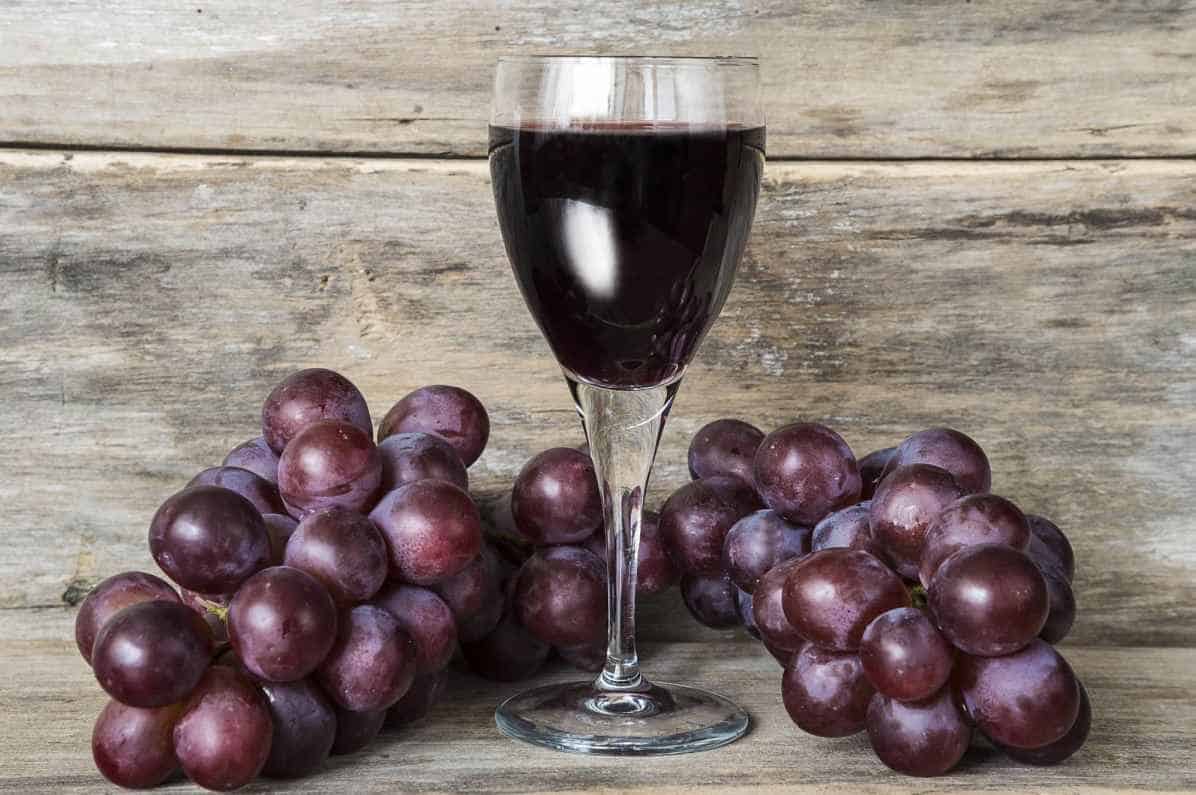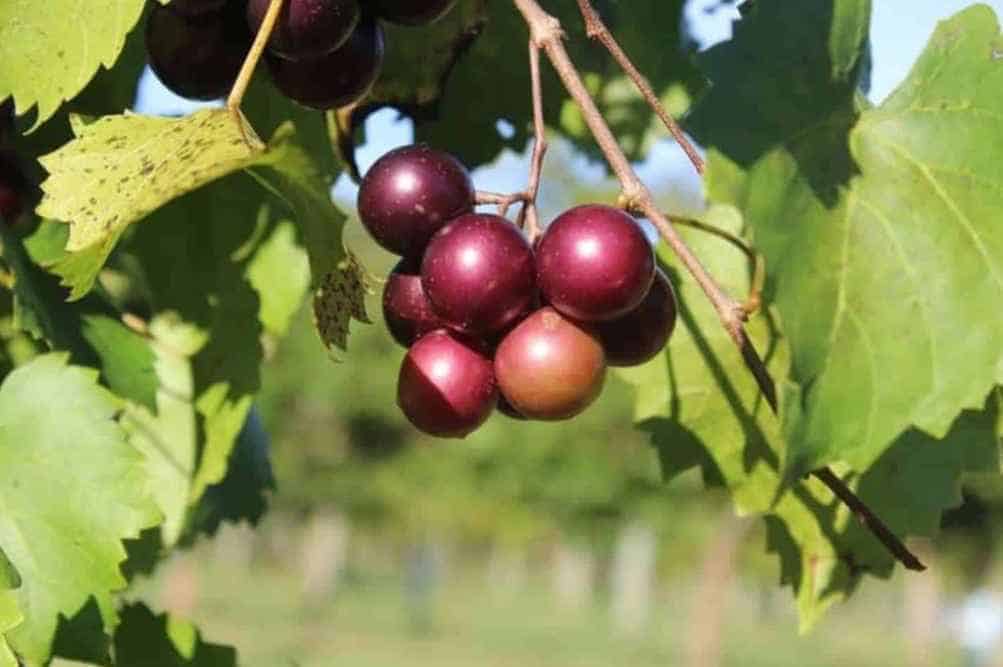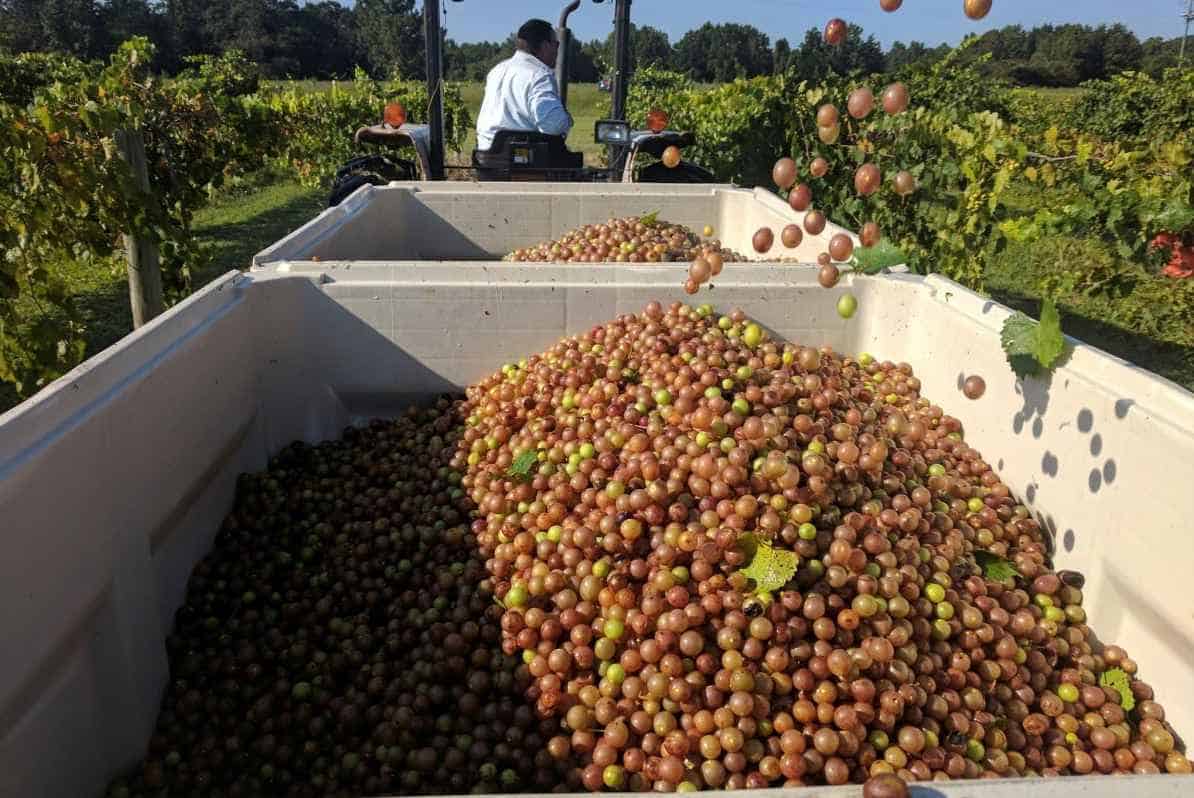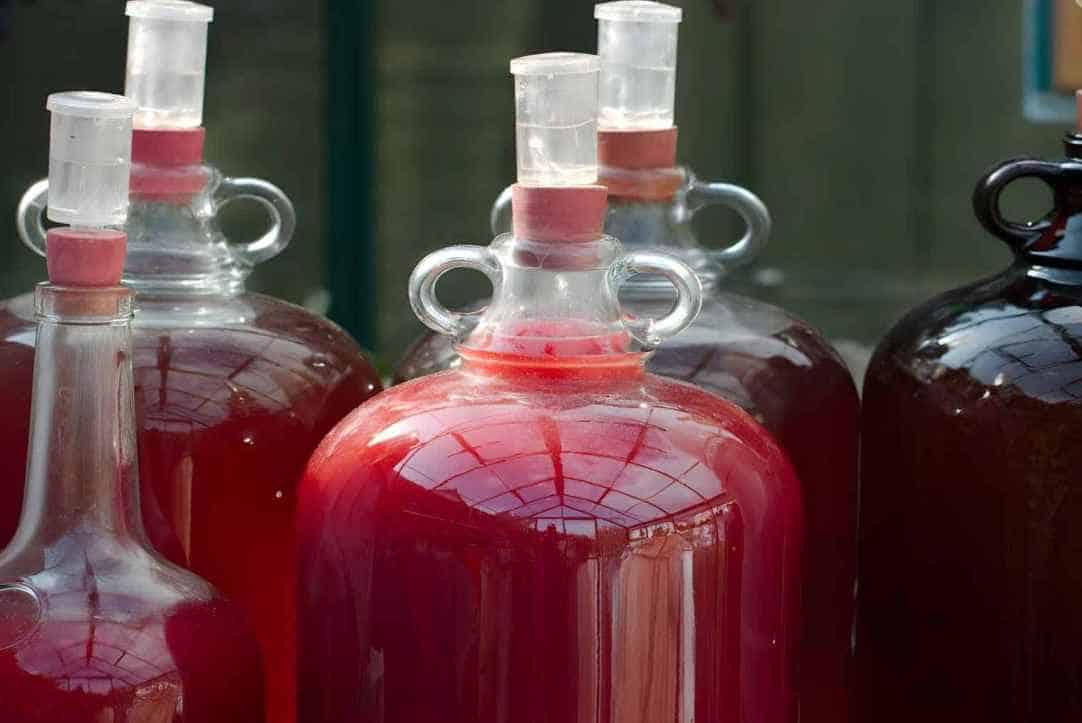Most people out there tend to focus on the Old World wines and disregard what New World wines have to offer. If they change their mind and want to try something new, I suggest they go for the Muscadine wine. What is Muscadine wine all about, and why should you try it?
Getting To Know The Muscadine Wine
The wine industry in the United States of America might not have the same prominence as its Italian and French counterparts, but it’s growing and thriving. When comparing the wines these nations produce, we know the US tends to create sweeter ones.
One of the best examples I can think of is the Muscadine wine. I had the chance to sip and savor different Muscadine wines and I can vouch for their more saccharine nature.
It is derived from a grape species known as Vitis rotundifolia and the berries are larger than the European ones; they come in various colors, including black and bronze.
Where can you find these Muscadine grapes? Muscadine grapes predominantly thrive in the Southeastern United States, flourishing in the warm and humid climate of this region. If you’re heading to the Southeastern part of the country, you will also see an abundance of this type of grapes.
I was trying to take in as much information about this wine and it was interesting to learn that long before the Europeans came to the USA, the Muscadine grapes had been growing in the wild.
When I visited the state of Georgia, I also learned that it’s the leading producer of Muscadine grapes in the country.
If you are leaning towards the Muscadine wine, you’ll be happy to know it comes in different varieties as well – red, white, rosé, and dessert wines. In terms of wine types, the Muscadine wine seems to have something in common with other wines in existence.
Muscadine Wine: An Overview Chart
Since a lot of people have not gotten into Muscadine wines yet, the hesitation to try it might be strong. I understand the sentiment, but I also feel like they are missing a lot from them because they are holding back.
I figured they could use something like this here as a reference because it gives you, more or less, an idea of what sort of wine they are getting.
| Body | Medium |
| Acidity | Medium |
| Flavor Profile | Fruity, Sweet, Rich with subtle hints of citrus and herbs |
| Tannin Levels | Medium |
| Average ABV | 10-11.5% ABV |
As seen on the chart, sweet is a flavor that’s often connected with Muscadine wine, so you have to remember this when recommending it to people. Some people might not be prepared for such a dulcet taste.
Producing Muscadine Wine
Did you know that the oldest grape to be discovered and cultivated happens to belong to the Muscadine grapes? There are hundreds of varieties, but we would be here all day if we had to list them all down.
Let’s settle for the most common Muscadine grapes that wine producers lean towards – Noble, Isons, Regale, Magnolia, Carlos, Tara, and Doreen.
Growing And Harvesting
The warmth and humidity that engulfs the Southern United States seems to be perfect for the Muscadine grapes. The spring season happens to be the best season to plant these grapes, albeit if you have been growing them in a container or pot for like a year, you can do it any time of the year.
When I first held these grapes, I noticed that they had thicker skin than the ones I was familiar with. This probably makes them not as vulnerable to diseases – not that it makes them immune or they get a free pass.
The harvest season of the Muscadine grapes is in the summer season. You should be wary of some of these grapes because they can only be refrigerated for a limited period. They need to be processed and turned into grape must as soon as possible.
Vinification Of The Muscadine Grapes
Some varieties of Muscadine grapes need to be prepared for the vinification process right after harvesting. In Muscadine grape winemaking, some winemakers are still holding on to the more traditional way of crushing the grapes – the one that involves using your hands!
Before you start throwing hands, if you are dealing with hundreds of pounds of grapes, there is a crusher that you can use for the grapes!
If you are making basic Muscadine wines, what are the things you need? You don’t need a lot of things but you must have these in handy – grape must, yeast, water, and sugar.
All you have to do now is mix dissolved sugar, grape must, and yeast in a container and leave the mixture untouched for 24 hours.
Fermentation And Bottling
How long would the Muscadine grape take to turn into wine? You might have to be patient with this one because It would take about six to nine weeks for the Muscadine wine to ferment. That’s not necessarily a long time but you also want to add the preparation period of about a week or so.
Before letting the wine go through the fermentation period, it’s imperative to stir and strain the mixture to get rid of the impurities first. Winemakers would usually transfer the mixture to another container, add water, and lock it tightly until it’s ready.
When the wine has finished fermenting, it’s time to bottle it and enjoy it! The excitement to taste a newly produced Muscadine wine must be through the roof.
The good news is you don’t even have to wait for eons before you can try it! Drinking this wine young is advisable since aging is not something that works well with Muscadine wine.
If you’re interested in making Muscadine wine on your own, this article can help you out [20 Fun and Easy Muscadine Wine Recipes].
Best Way To Drink Muscadine Wine
You would be stunned at how much you would enjoy this wine once you have tried it. Yes, it might not be as popular as the Cabernet Sauvignons and Chardonnays of the world but it also has its own merits.
One of the best ways to counter the sweetness of this wine that might overwhelm people is to serve it cold. As with most alcoholic beverages, take caution and consume the Muscadine wine in moderation.
Pros Of Muscadine Wine
Muscadine wines might not be on top of your wine list right now, but you just might change your mind after learning more interesting things about it.
This wine comes from a fruit containing a lot of vitamins and minerals, so whenever you drink it, you are also getting these nutrients. So, what are the nutrients that you can get from Muscadine wines?
This might seem like a short list, but as always, there’s more than meets the eye! There’s calcium, iron, phosphorus, potassium, and protein. And not to be disregarded are Vitamins C and D!
High Fiber
Muscadine is one of the grape varieties with high fiber content, specifically insoluble fiber. Drinking Muscadine wine can add more fiber to your system and benefit the digestive system. If you want good gut health and a healthy weight, you need enough fiber in your body.
Rich In Antioxidants
Grapes are known for their antioxidant contents that help fight free radicals in the body. These are known to help decrease the risk of developing major health problems like the cardiovascular system, cancer, and a whole lot more!
As you might have observed, the older we get, the fewer antioxidants are left in our bodies and we need to do something to supplement that. The antioxidants from the grapes will act as an aid in keeping the skin healthier and younger.
Muscadine Wine Food Pairing
Wine and food seem to be that unbreakable tandem that you always hear about. Pairing these two together helps enhance their respective flavors and elevates whatever dish you are about to eat.
If you love fiery flavors, the sweetness of the Muscadine wine cuts through the spiciness of the dish without completely erasing the spicy flavor.
Since Muscadine wines are popular in the South, it only makes sense to drink them with comforting Southern food. If you’re having barbecued meats for lunch or dinner, whip out that bottle of Muscadine wine and eat as passionately as you can.
Cheese is always something that comes up when people bring up the subject of wine pairing. Some cheeses have rich and sharp flavors that might be too overwhelming for your liking.
If I wanted to subdue the intensity of the cheese, I could always reach for a glass of Muscadine wine with no problem!
Must Try Muscadine Wines
I have had my fair share of Muscadine wine and I think If you’re ready to take the plunge, I recommend getting a bottle of these wines:
| Wine | ABV | Flavor Profile |
| Lakeridge Southern Red | 11% | Sweet, Light,
Full-bodied, Fruity |
| Duplin Cool Muscadine | 10% | Smooth, Sweet but
with hints of tanginess, Fruity, and Refreshing |
| Belle Meade
Red Muscadine |
12% | Sweet with Berry notes,
Smooth and Light, Goes well with Spicy food |
Must Try: Muscadine Wine
Now that we know what a Muscadine wine is, is this another wine option that can be added to the list? Believe me when I tell you it’s a welcome addition to the wines you have already tried and tasted before.

George Moore, co-founder of Wine Flavor Guru, is a charismatic entrepreneur with a rich background in California’s wine industry. Alongside Sylvia, he transformed a Sonoma County vineyard into a source of premium wines. George’s expertise in sourcing exceptional grapes and his approachable style make wine appreciation both accessible and engaging.








